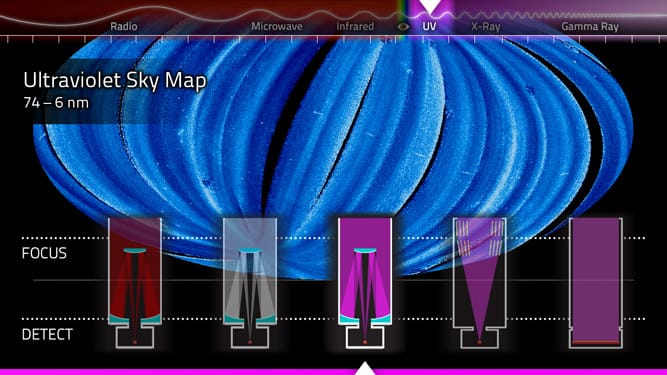Astronomers have identified the largest radio jet ever seen, a discovery that is shedding light on activity in the universe’s distant past. Emanating from the quasar J1601+3102, the massive radio jet spans an impressive 200,000 light-years across, dwarfing our Milky Way galaxy. This discovery not only offers unparalleled insights into high-energy cosmic environments but also provides a window into a time when the universe was only 1.2 billion years old.
Radio jets are streams of relativistic particles emitted from the vicinity of supermassive black holes found at the centers of quasars. They are known for their ability to transport vast amounts of energy over intergalactic distances, sculpting the structure of galaxies and influencing their evolution. However, discovering such jets in the early universe is exceedingly rare due to the immense distances involved, which make even the brightest phenomena appear faint.
The colossal jet was observed using the Low Frequency Array (LOFAR) Telescope, a cutting-edge network of radio observatories capable of capturing detailed images of cosmic objects billions of light-years away. “This jet represents a unique opportunity to study the powerful processes occurring when the universe was in its formative stages,” said one of the leading researchers involved in the study.
J1601+3102, the host quasar of the jet, is located nearly 12 billion light-years from Earth. Its light has taken almost the entire history of the universe to reach us, making it an extraordinary historical time capsule. Such distant quasars are of immense interest to astronomers, as they illuminate conditions and events that occurred when galaxies and supermassive black holes were at an early stage of development.
At the center of J1601+3102 lies a supermassive black hole, a gravitationally intense object thought to have formed and grown rapidly during one of the universe’s most dynamic periods. The radio jet emanating from this black hole is not just a marker of the energy being released but also a signature of how material interacts in its highly energetic surroundings. By analyzing the light and structure of the jet, scientists can infer the physical properties of the black hole and the processes that power its immense output.
Most significantly, this discovery challenges existing theories about black hole activity in the cosmos’ early history. While radio jets have been found previously in young galaxies, none have demonstrated the scale and energy observed in J1601+3102. This suggests that supermassive black holes may have become active more quickly than scientists predicted or that the conditions enabling such jet production were exceptionally favorable in this case.
Questions remain about the jet’s origins and its impact on galaxy formation. Radio jets are believed to exert significant mechanical pressure on their surrounding environments, potentially influencing star formation rates and the distribution of intergalactic gas. Whether this jet contributed to shaping its host galaxy in significant ways remains a subject of ongoing study.
Compounding the scientific intrigue is the jet’s staggering length. At over 200,000 light-years, it stretches far beyond the boundaries of the host galaxy. Such expansive jets are rare and suggest that J1601+3102 was extraordinarily efficient at generating and transporting energy. Observations also indicate that the jet maintained a high degree of coherence without dissipating quickly, a phenomenon scientists are keen to understand in greater depth.
In addition to helping unravel the mysteries of black hole physics, the discovery serves as a testament to the technological advancements of modern astronomy. Instruments like the LOFAR Telescope are enabling researchers to probe further into the universe’s history than ever before, uncovering phenomena that would have been invisible using older technology. The team behind this finding hopes that it serves as the first of many such discoveries.
“This discovery is just the tip of the iceberg,” a co-researcher predicted. “As instruments become even more sensitive and capable, the early universe will no longer seem as elusive as it once did.”
Understanding massive jets like the one in J1601+3102 provides broader context for how galaxies interact with and shape their environments over billions of years. As astronomers continue to analyze this exceptional cosmic event, data from it could lead to transformative insights into some of the most fundamental processes in the universe.
This discovery highlights the incredible potential of modern radio astronomy to unlock the universe’s stories, many of which remain hidden from telescopes restricted to visible light. It represents a major leap forward in understanding how massive black holes and their accompanying jets have shaped the universe across different epochs.
As astronomers and physicists continue to explore J1601+3102 and its record-breaking jet, the data gathered may provide not just new questions but also long-awaited answers regarding the evolution of galaxies, the role of radio jets, and the nature of the early universe itself.


